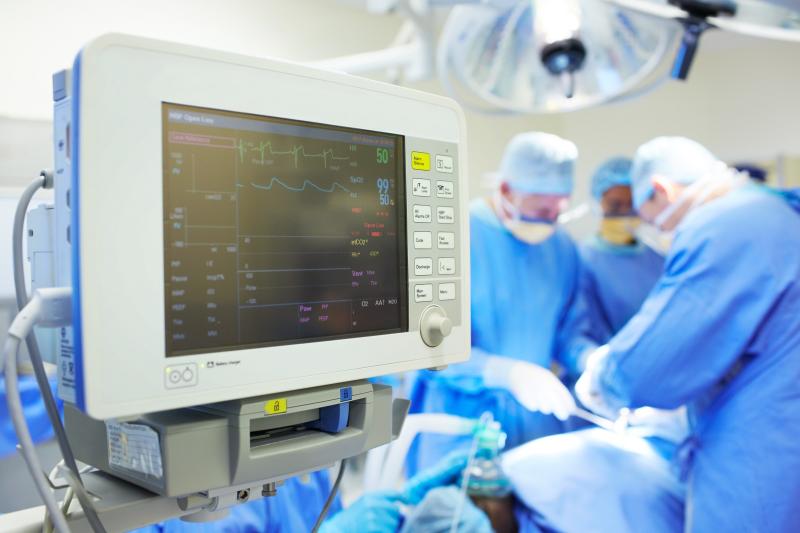
Article
Medical Device Marketing - What You Need To Know for FDA Approval
Pacemakers, defibrillators, dialysis machines, urinary catheters. Medical devices have changed the way healthcare treatments are delivered. But medical device manufacturers face incredible challenges bringing their products to market. Like pharmaceuticals, the Food and Drug Administration controls the approvals for medical devices. And in many cases, the requirements that medical device makers must meet are similar.
The regulatory controls and marketing pathways are also based on risk and efficacy. Brands must meet the regulatory controls needed to “ensure reasonable assurance of safety and effectiveness.” So let’s examine exactly what it takes to gain FDA approval for your medical device products.
FDA Classifications for Medical Devices
According to the FDA, medical devices marketed in the United States are subject to the regulations in Title 21- Code of Federal Regulations (21 CFR) Parts 1-58, 800-1299. Within these regulations you’ll find a set of classifications for various device characteristics.
So the first step in preparing your device for marketing in the US is to determine how the FDA will classify your device. The three tiers of FDA device classification are as follows:
I Lowest Presents minimal potential for harm II Moderate Higher injury risk than class I devices III Highest Sustain or support life, are implanted, or present potential unreasonable risk of illness or injuryPremarket Application
In order to get a device through the agency’s examination and approval process, you must follow four steps, which can be found on the FDA website.
- Classify device, understand applicable regulatory controls
- Select & prepare premarket submission
- Send premarket submission to the FDA
- Comply with applicable regulatory controls for approved classification
Some device types don’t require for a specific classification. However, in order to file your application under the appropriate classification for your device, you’ll need to prepare the correct premarket submission. For most medical device types, you will find the appropriate submission type within the product classifications found here.
Premarket Submission Types
The FDA currently uses four premarket submission categories for medical device manufacturers: premarket approval, 510(k), humanitarian device exemption, and de novo.
Premarket Approval
The premarket approval (PMA) is the most stringent type of device marketing application required by FDA. A PMA is an application to request general approval to market.
All Class III devices require a PMA. Before the FDA approves your PMA, you’ll have to provide valid scientific evidence demonstrating reasonable assurances of safety and effectiveness for the device’s intended use.
510(k)
A 510(k) is used to demonstrate that the device to be marketed is as safe and effective – or substantially equivalent – to an existing (“predicate”) legally marketed device that has not been subject to PMA. A 510(k) submission is required at least 90 days before marketing unless the device is exempt from 510(k) requirements.
Some Class I and most Class II devices require a 510(k), in which you must demonstrate that your new device is equivalent to a predicate device in terms of intended use, technological characteristics, and performance testing.
Humanitarian Device Exemption
The humanitarian device exemption (HDE) provides a regulatory pathway for Class III devices intended to benefit patients with rare diseases or conditions. In order for a device to be eligible, you’ll have to first obtain designation as a humanitarian use device (HUD), which is granted through an application to FDA’s Office of Orphan Products Development.
An HUD is considered for its intended benefit to patients of treating or diagnosing a disease or condition that affects fewer than 4,000 individuals in the US annually. Note that the HDE application is similar to a PMA application, but your device may be exempt from the effectiveness requirements of a PMA.
De Novo
A de novo submission is used when a new, or novel, medical device cannot be classified but general controls alone – or general and special controls – provide “reasonable assurance of safety and effectiveness for [its] intended use, but…there is no legally marketed predicate device.”
De Novo provides an alternate pathway for novel Class I and II devices. For vertical product lines, this premarket submission may be a lead-in for future devices to become predicate devices for future 510(k) submissions. The FDA provides searchable databases of previously approved devices for marketing or those that have been declared substantially equivalent to a legally marketed device.
While the path to medical device approval may be as tricky as pharmaceutical approvals, med device brands that master the FDA submission process will be well-positioned for future approvals.
If you have a device nearing the end of that process, reach out to an Elsevier advertising specialist who will help you get prepared for a full-scale launch following approval.
Article Written by: Alex Brown


